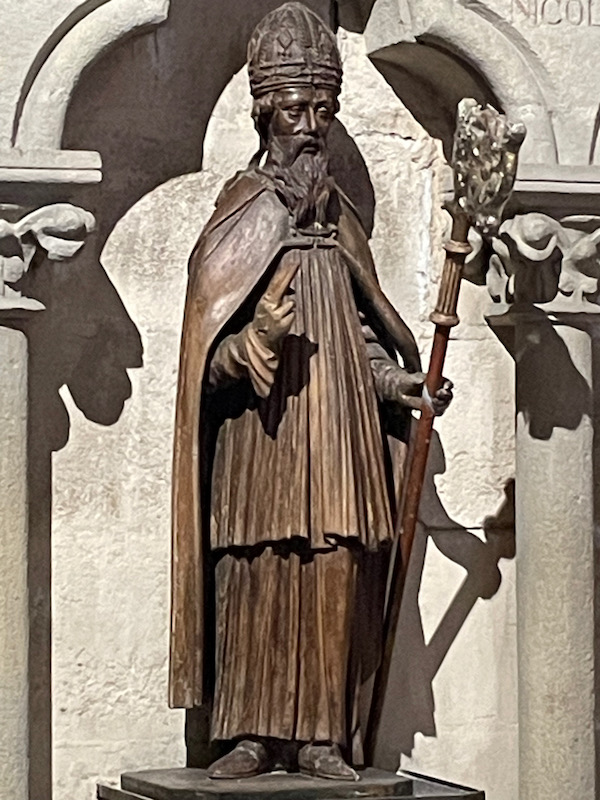Our Blog - Summer 2024 Trip - Moulins, France
Established in 990, Moulins is a very charming town which still has many treasures. Its "glory days" were when it was the seat of the Duchy of Bourbon, from 1327 to 1527. Headed by Peter II and Anne of France, eldest daughter of Louis XI, the court was brimming with the most renowned artists from the start of the Renaissance. The old town has half-timbered houses large private residences which were owned by the bourgeois.
A bit of trivia about the town ...Gabrielle Chasnel, who would become the famous fashion designer Coco Chanel, was born in a poor hospice in 1883. Her birth certificate misspelled her last name as "Chanel" bbecause neither parent was at the registration. The family lived for awhile in Brive (where we went to earlier) and then moved to Moulins at 18 to live in a boarding house for Catholic girls. She began singing in a cabaret named "La Rotonde" and this is where she got the name "Coco". She moved to Vichy and back to Moulins. She was a "mistress" to several rich people, one installing her in an apartment in Paris. After this, I don't think she ever went back.
This boarded-up building is the former Castle of the dukes of Bourbon. The first castle was here in the 11th century and it was rebuilt by Louis II of Bourbon between 1366 and 1375. The North wing was added in 1497 and was among the first Renaissance buildings in France. The widow of King Henri III retired and died here in 1601. It was a German prison during WWII and was a prison until 1984. Part of it is boarded up and there is a lot of work going on. It seems one part of it is open and is a museum. The pictures from a distance look much better ... but you can still see the windows in the darker middle-section are just one wall .. there is no wall on the other side.
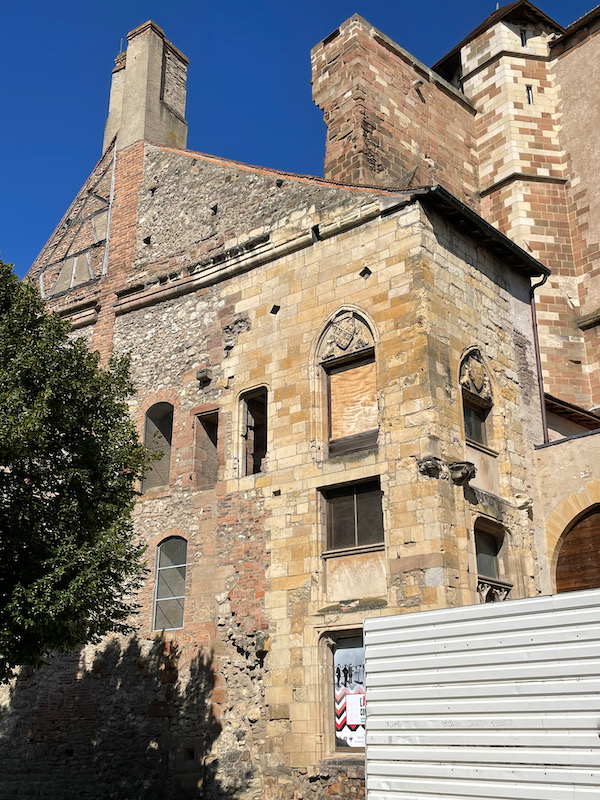
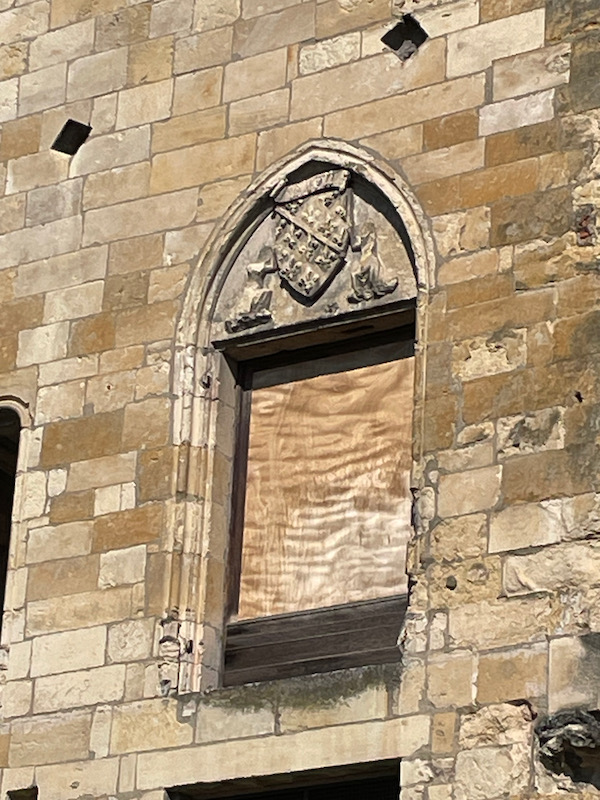
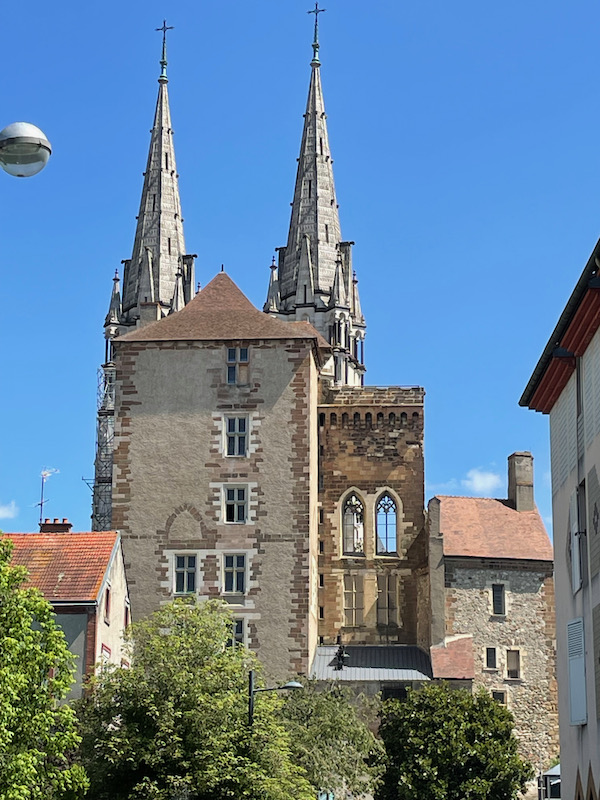
The Cathedral was, like many churches, built in two different time periods giving it different architectural styles. The choir is from the former collegiate church of the 15th century, while the nave and 2 bell towers date from an extension of primitive Gothic style of the 19th century, when it was made a Cathedral. The choir, made of pink sandstone, is in the flamboyant style of late Gothic architecture. The nave and bell towers, in the neo-Gothic style, alternates white limestone and black lava rock. You can see this white-and-black style around the rose window on the front, which I think is interesting with the carved heads in the middle.
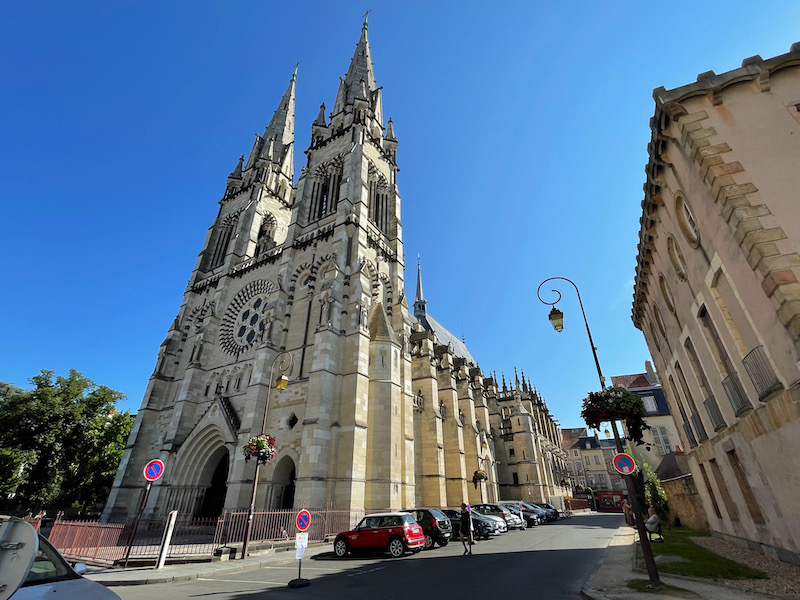
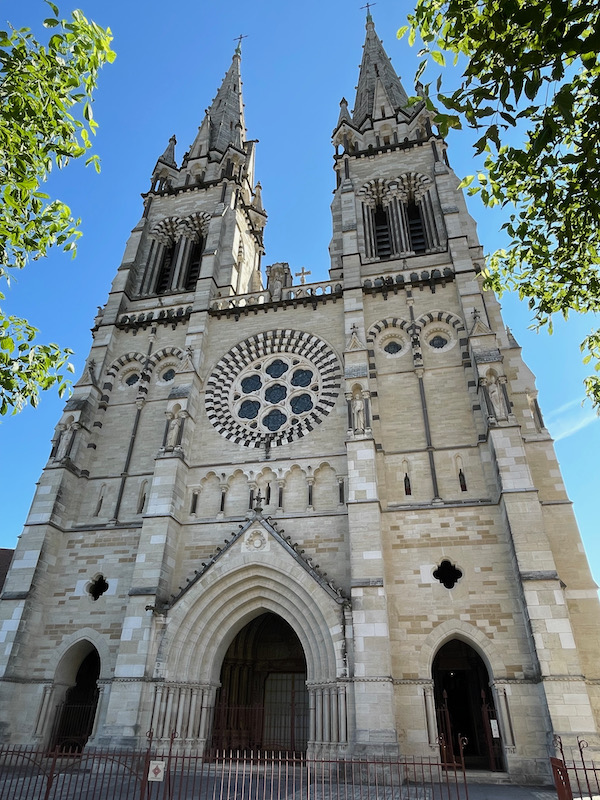
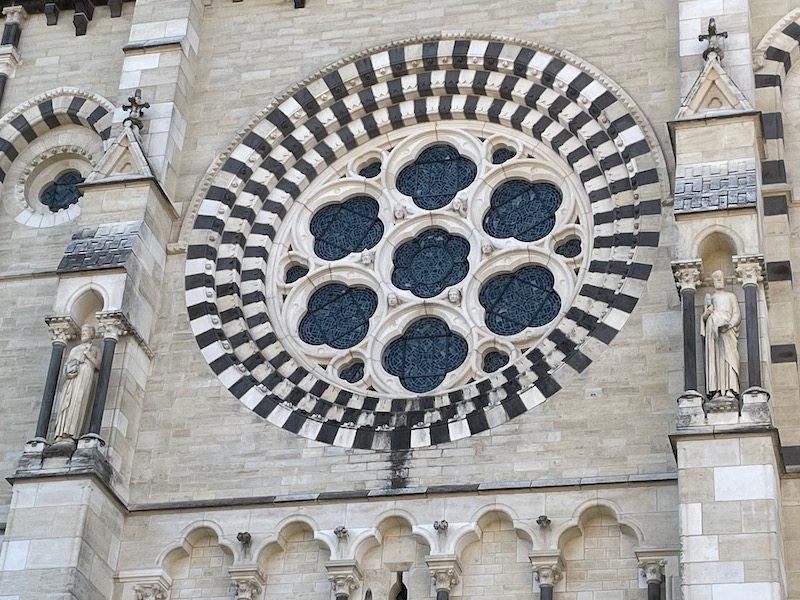
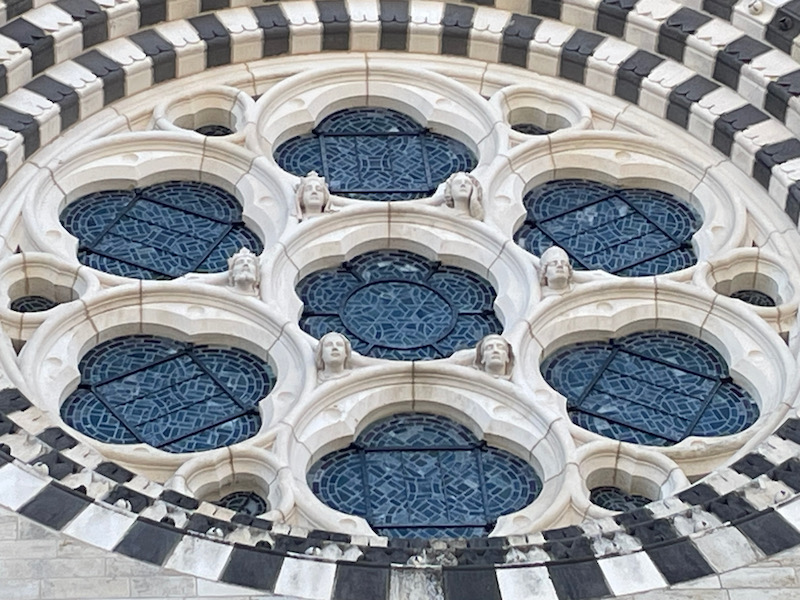
As you enter, you come into a porch, with frescoes that are painted with wax, the frescoes are by Charles Lameire.
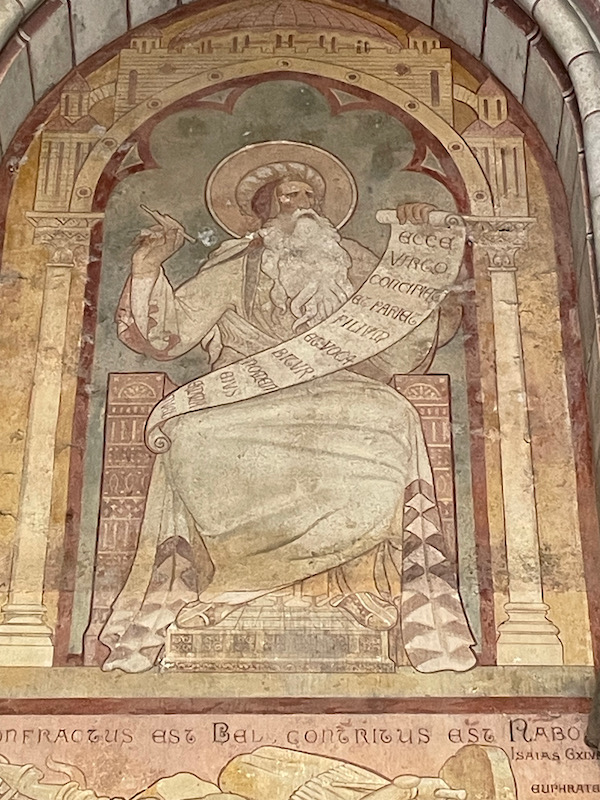
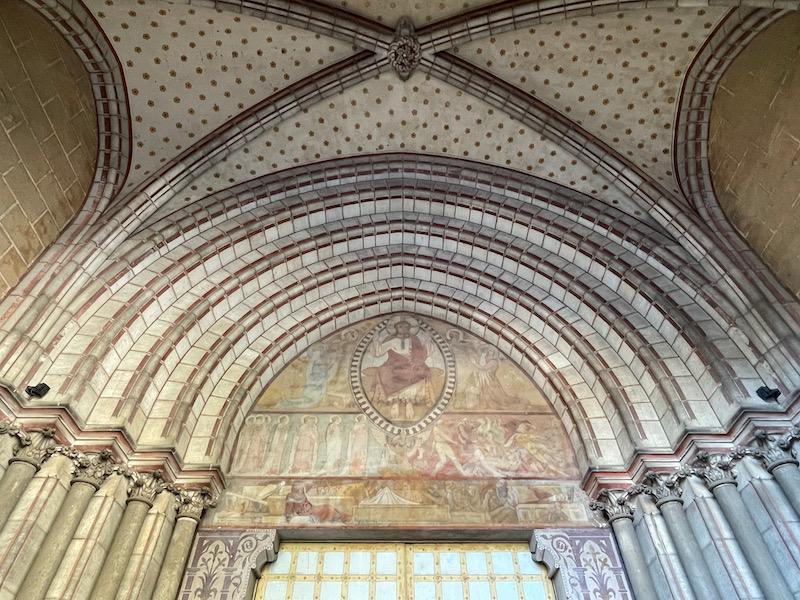
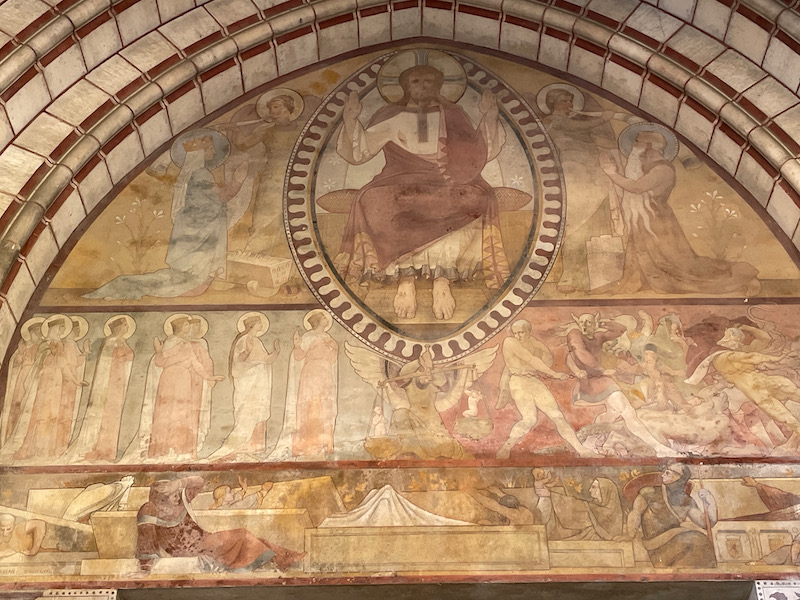
Here is my typical picture looking down the nave. You can see the columns separating the nave from the 2 side aisles with their neo-Gothic arches. And then up at the choir, also with Gothic arches and the very tall vaults.
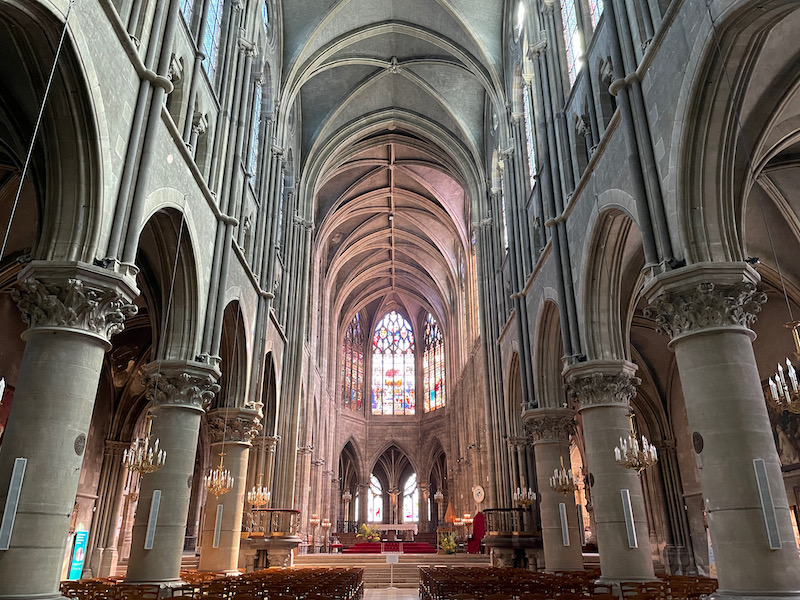
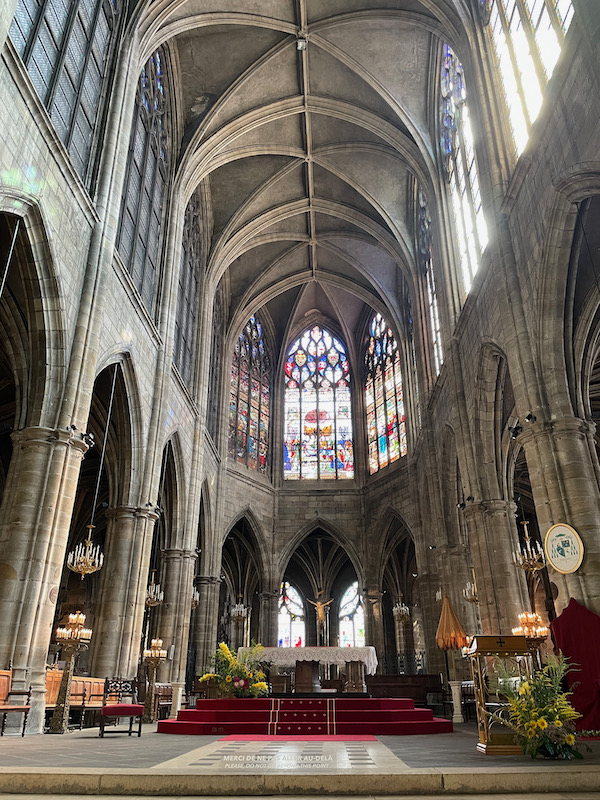
A lot of churches have a statue of Joan of Arc, but this one is the first one that I have seen showing her genuflecting.
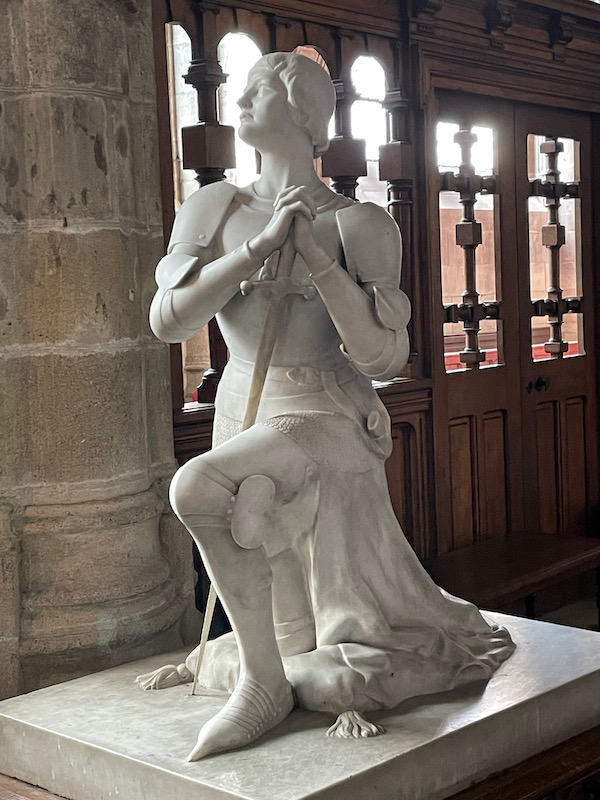
This is the Lamentation of Christ. The sculpted figures are painted stone dating back to the start of the 16h century, with the close-up ones showing Saint Jean and Mary.
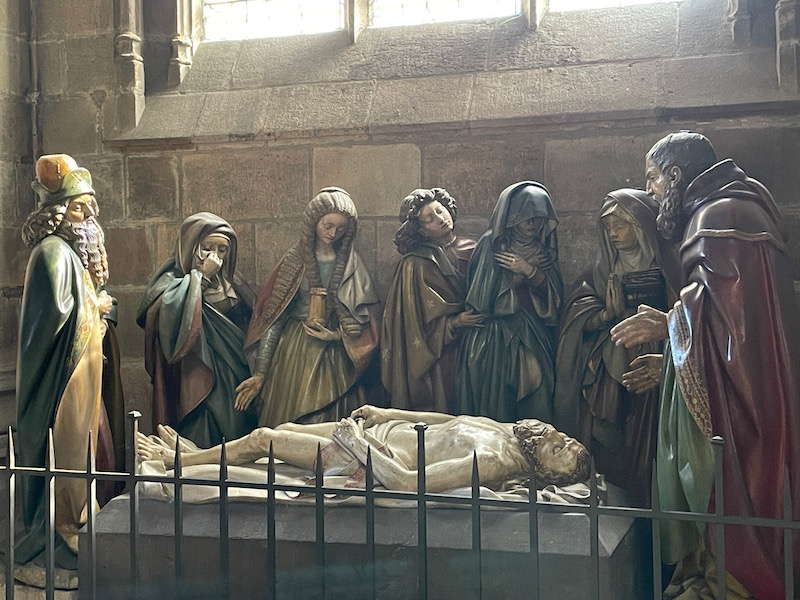
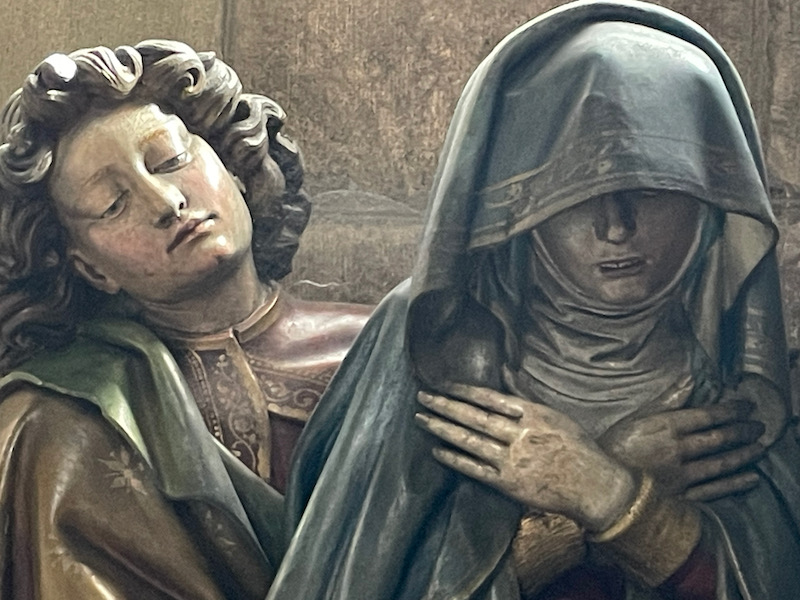
The cathedral is lit by means of sumptuous stained-glass windows from the 15th and 16th centuries, some of which are portrayals of the last Dukes of Bourbon. Most of them depict their donors grouped around a large subject. In the 15th century, it was common for wealthy people to finance the stained glass windows and for these donors to have themselves depicted in these works, sometimes with their close family.
The windows date from 1480 to 1550 and each has a topic, like the life of Saint Barbara, Saint Elizabeth, or the last Supper.
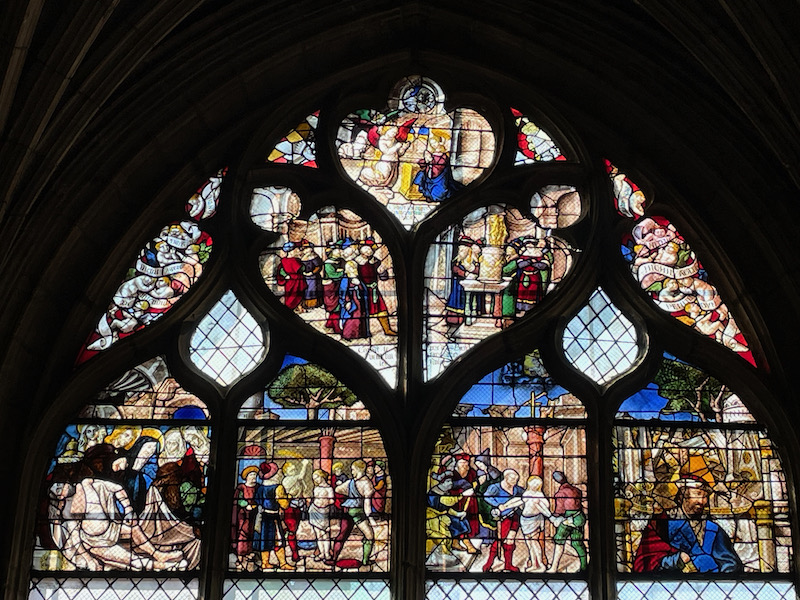
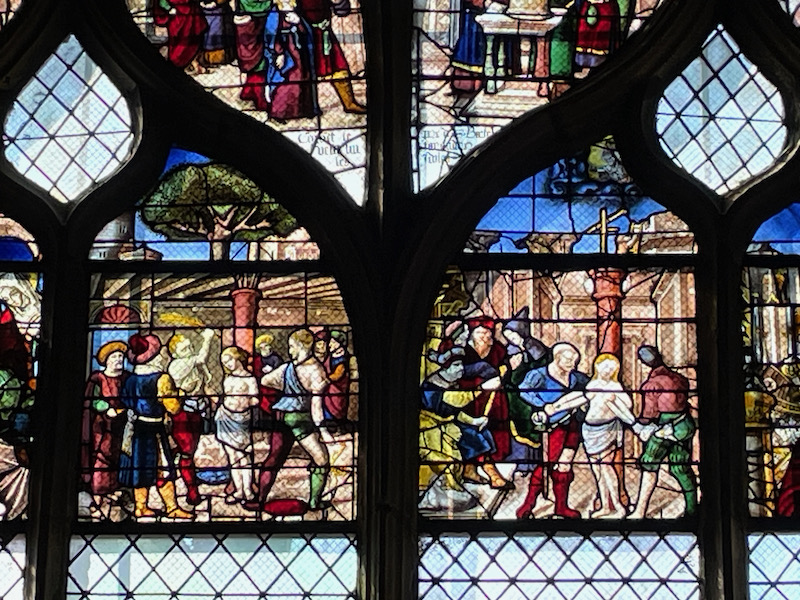
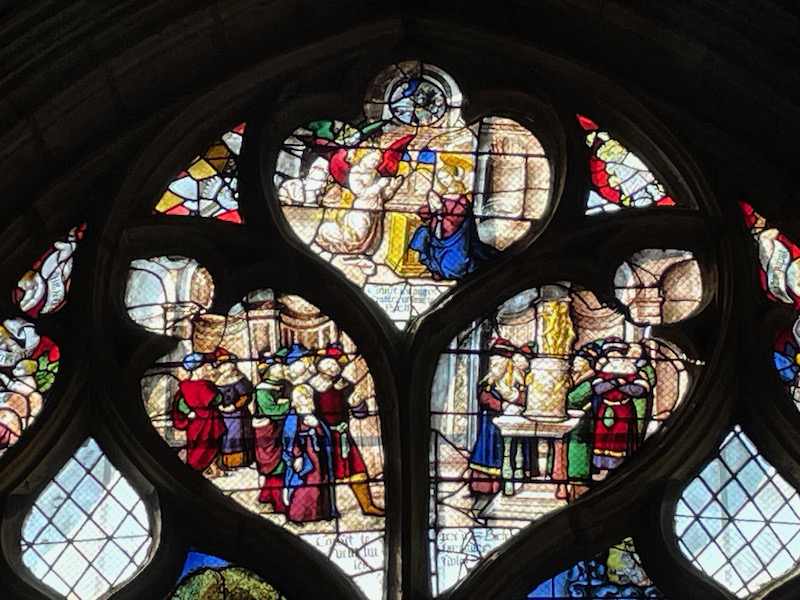
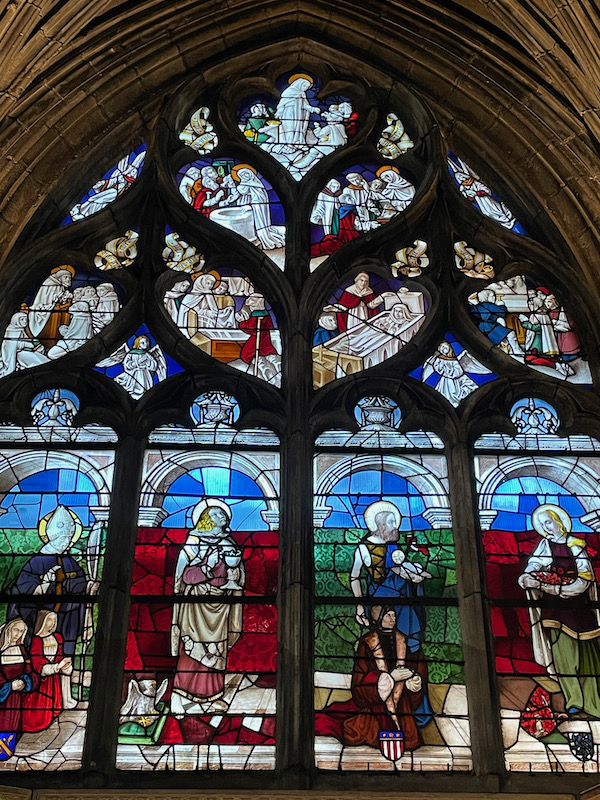
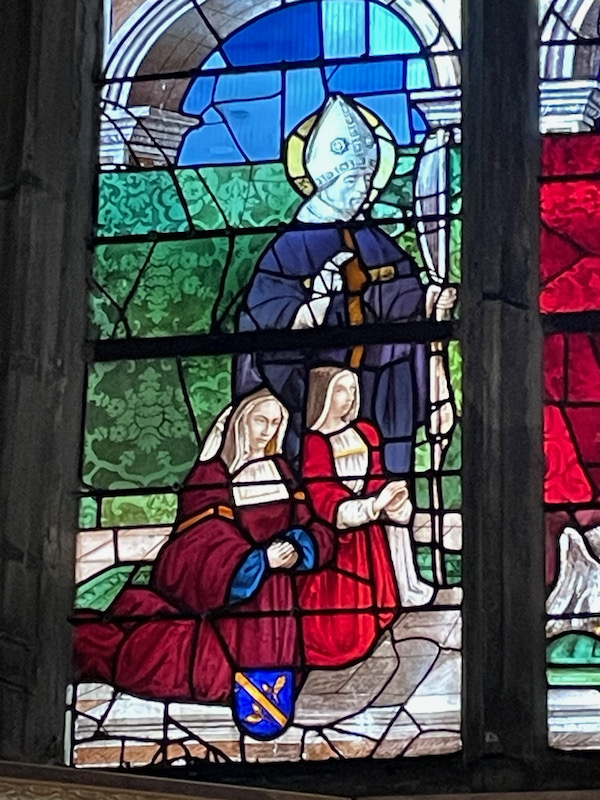
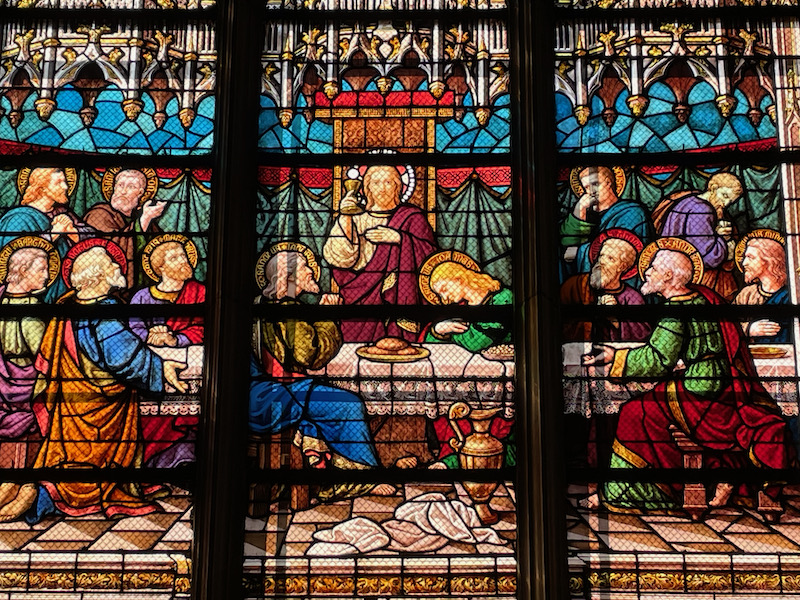
This is called the triptych of the Master of Moulins. The masterpiece, although dated 1502, has survived the centuries without deterioration. This is thanks to being kept closed for a long time and the high-quality paints used. Normally, you have to pay to see it but at this time, you can see a copy of it on display for free. The original is at the Centre for Research and Restoration of the Museums of France at the moment.
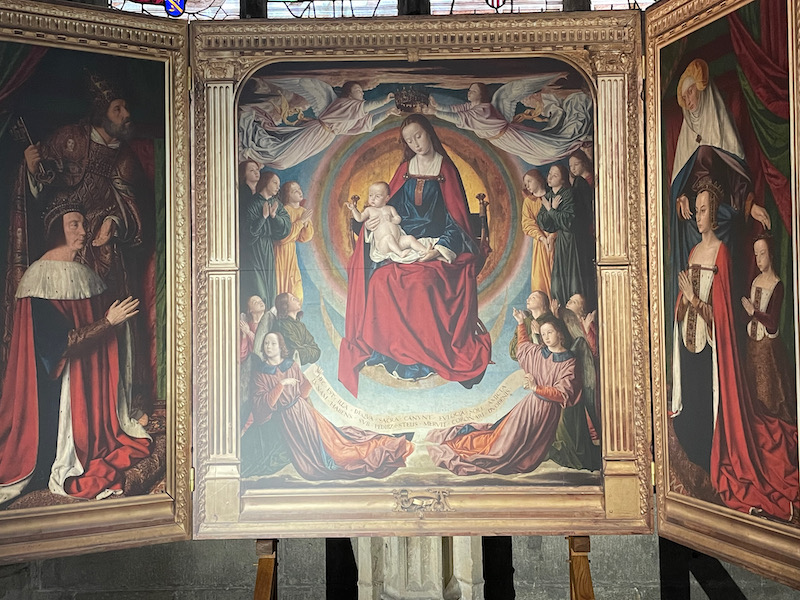
Starting in the middle, he central panel shows the Virgin and Child surrounded by angels. She is shown sitting in an iridescent mandorla symbolizing the Sun, floating in the center of the heavens, surrounded by 14 angels.
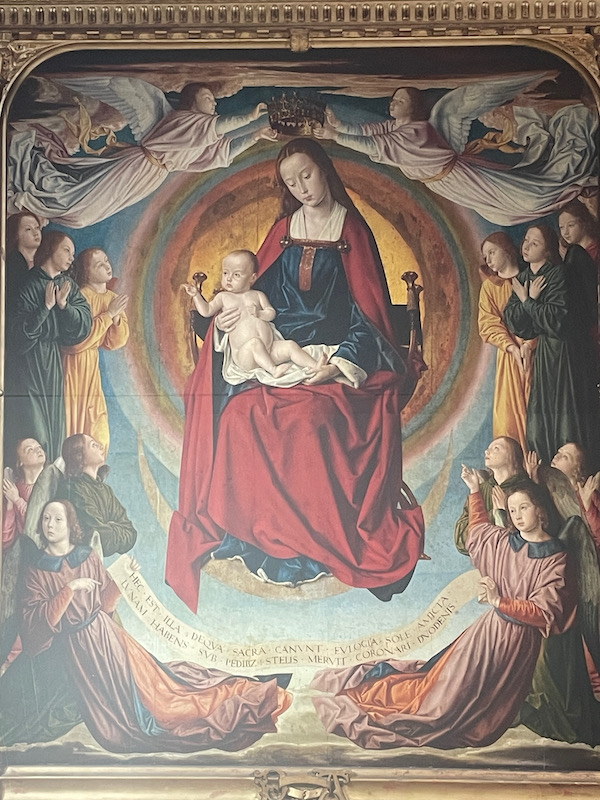
In the left side panel, Duke Peter II of Bourbon kneeling accompanied by his patron saint Peter (holding the keys).
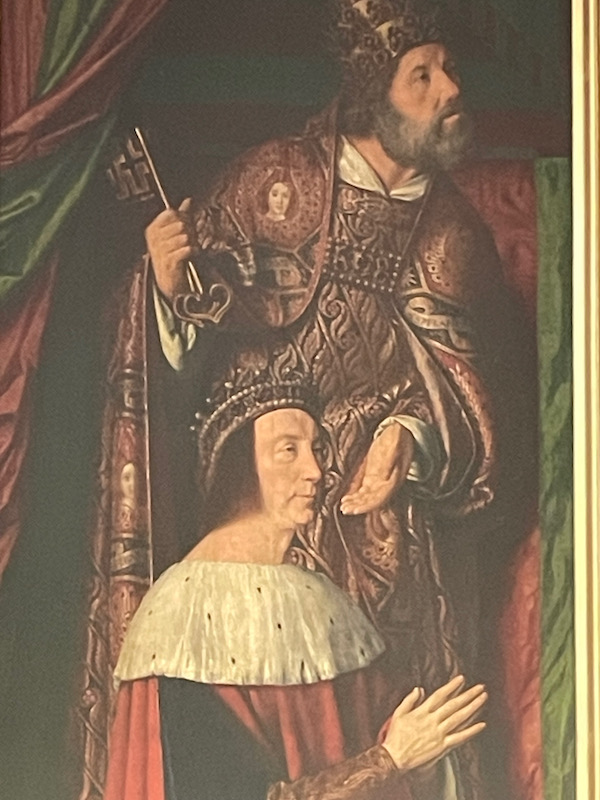
On the right, Duchess Anne de Beaujeu and their daughter Suzanne are shown, also kneeling in prayer, placed under the protection of Saint Anne.
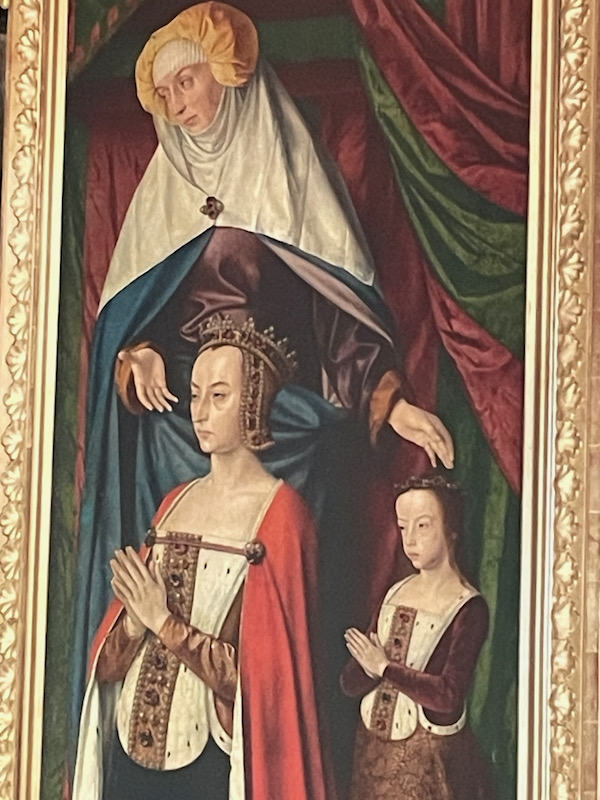
This is a nice building that I was just admiring and taking a picture, when a guy came by with keys and allowed us to go inside to see the courtyard.
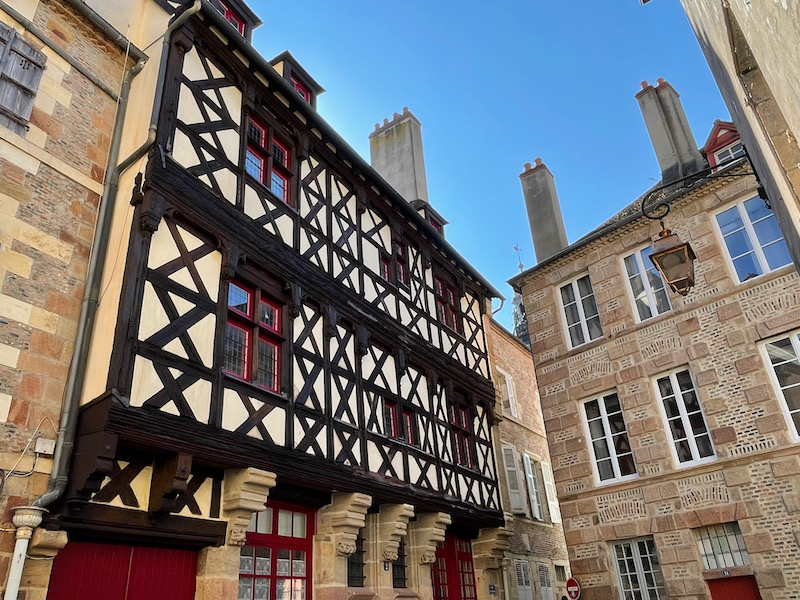
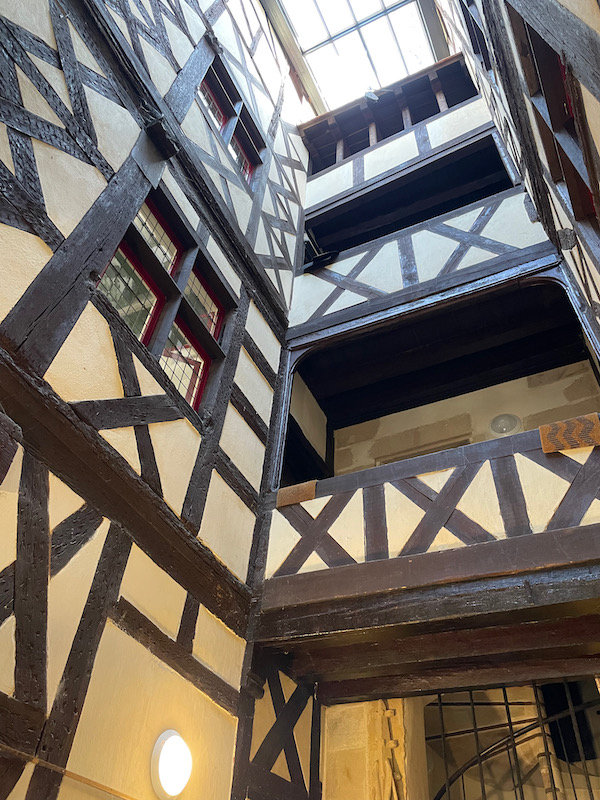
The Jacquemart tower is somewhat famous for bells that represent 2 parents and 2 children. Every quarter hour, the 2 small bells (the 2 kids) are struck and every hour, the parents strike the large and very loud bell. The tower dates from 1656 and was sponsored by Queen Anne of Austria. The top burned down in 1946 and was replaced by a faithful copy.
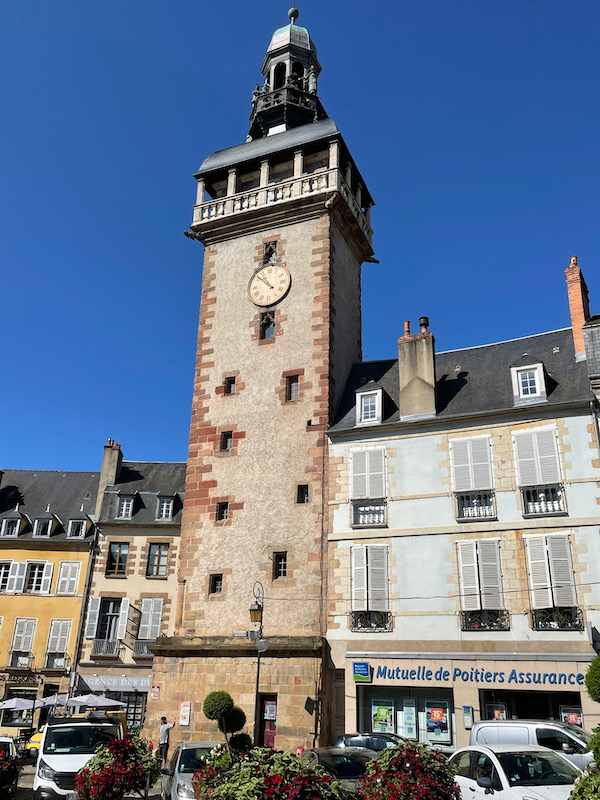
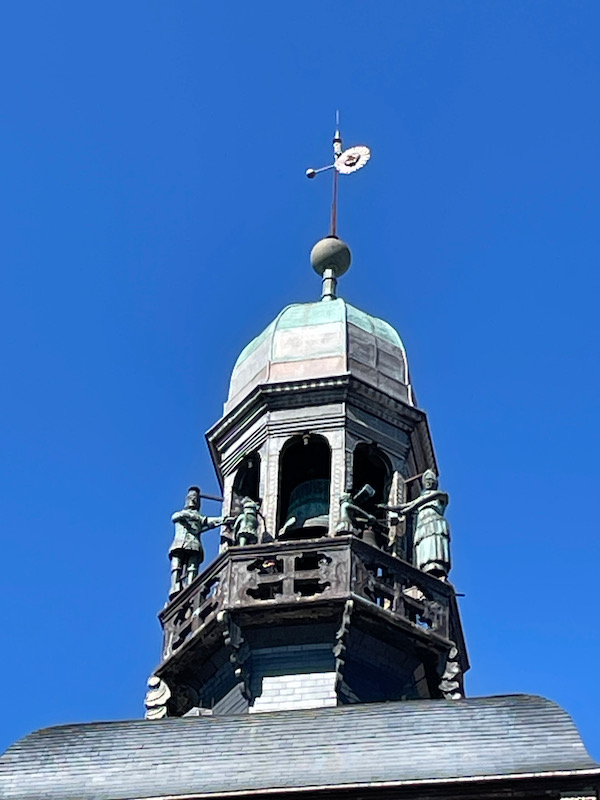
Not the easiest to see but you can hear the bells chiming and kinda see the two figures on the left moving, hitting the bells. Interestingly enough, I asked the owner of the cafe that we grabbed coffee at if the top moved and he said that yes, the men work but the women are on strike :-)
Just another nice building, which is the home of the bank Caisse d'Epargne.
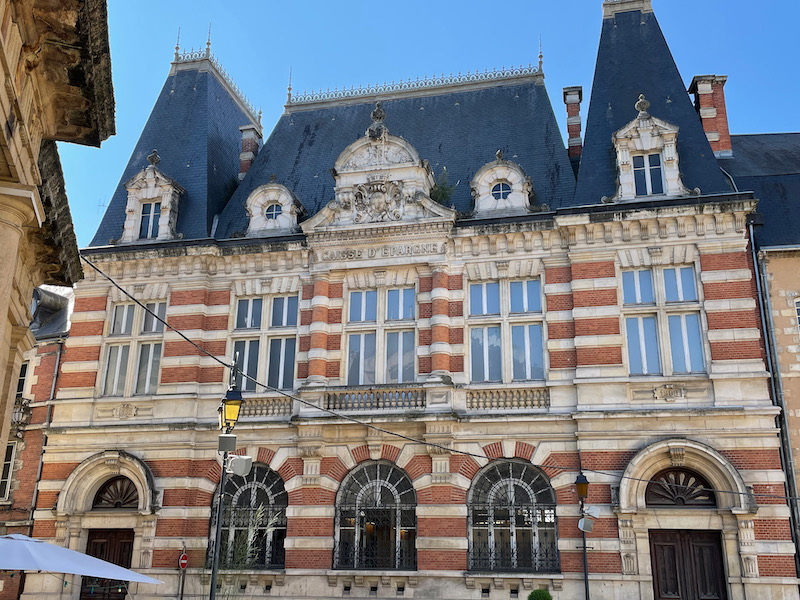
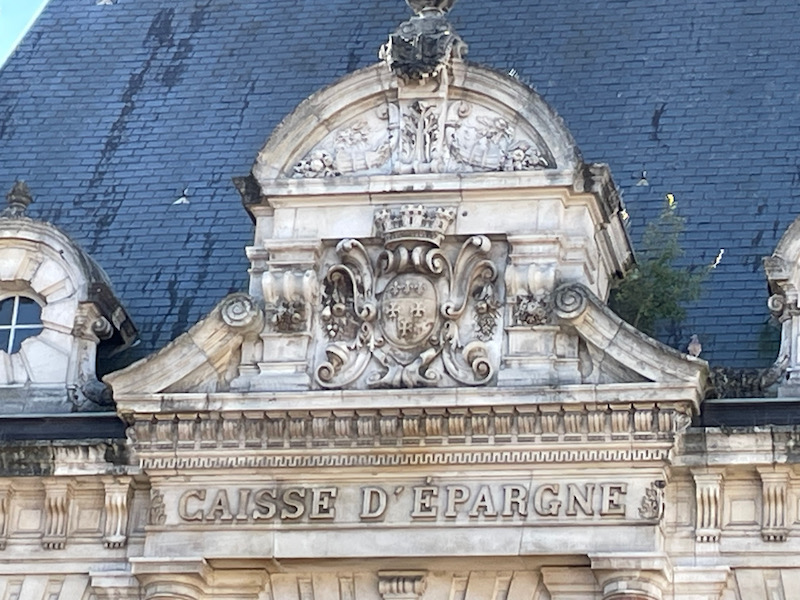
And then nearby that large, grand building is these two half-timbered houses, one of them being VERY narrow.
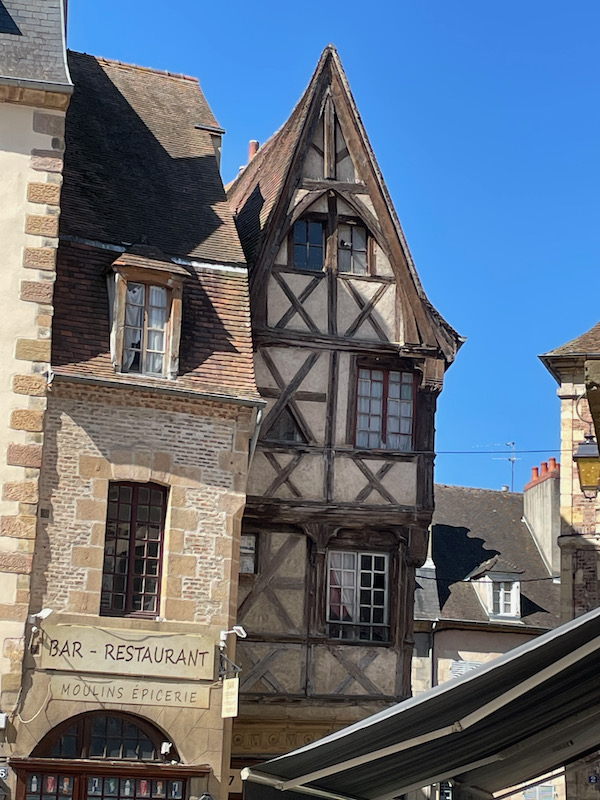
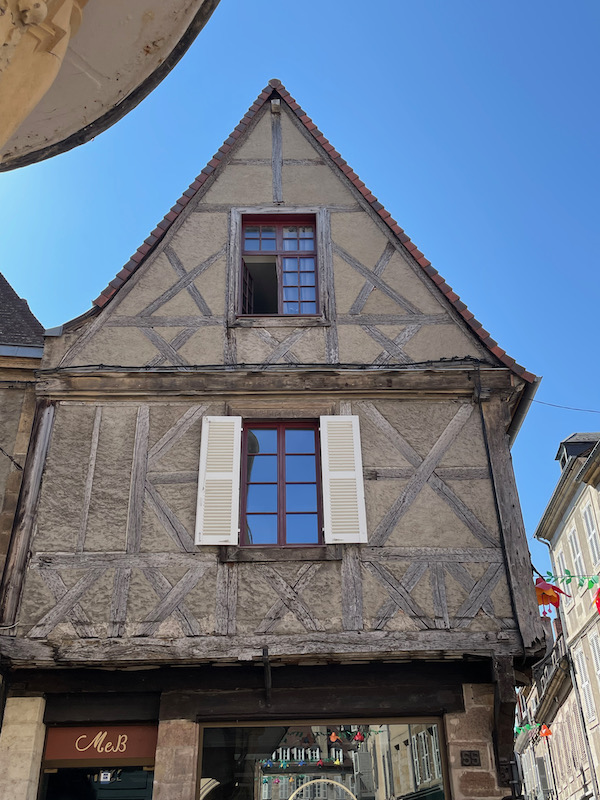
Theatre de Moulins - During the Middle Ages in Moulins, stage performances were given in the open air on a platform built in the middle of a square. Just after the French Revolution, the city had a real performance hall installed in the former Sainte-Claire church. However, it was small and someone dilapidated. Work began in 1841 on a new theater with room for 800 seats, spread over four levels and served by different staircases. But the architect had not considered that he was building the theater on marshy ground (an old pond) and didn't notice that most of the neighboring houses were built on stilts. In 1845, while the building was under construction, numerous cracks appeared and the stage walls threatened to collapse. The building was then partially demolished to be rebuilt and inaugurated in 1847.
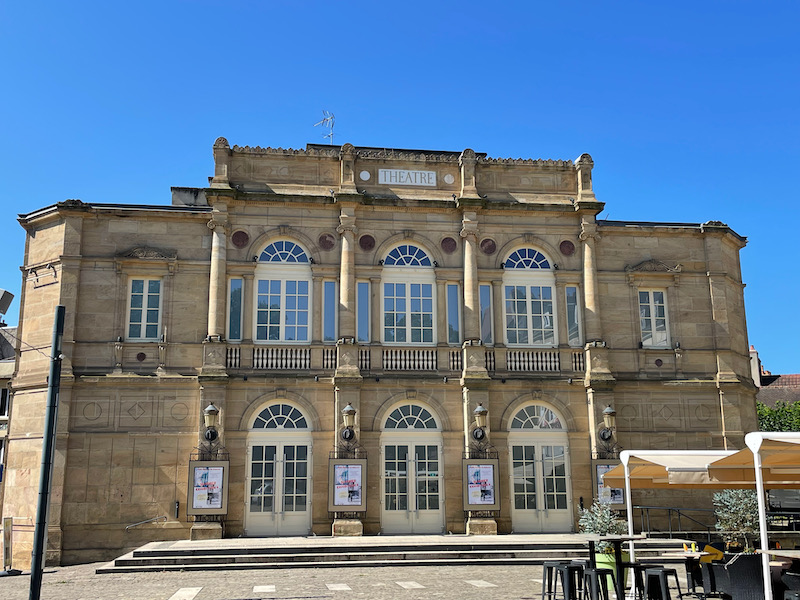
Church Eglise Saint-Pierre dates to the 15th and 16th centuries with a flamboyant neo-Gothic bell tower (that was added in 1901). Until the Revolution, this church was the church of the Carmelite convent founded in 1352. The large rectangular Notre-Dame-de-Pitié chapel was added in the 17th century to be used for Carmelite services until the Carmelites were expelled in 1790.
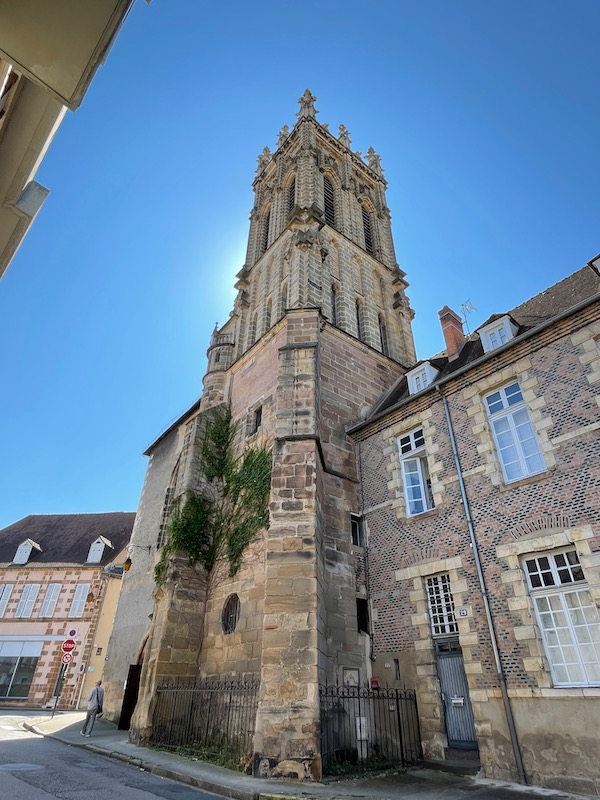
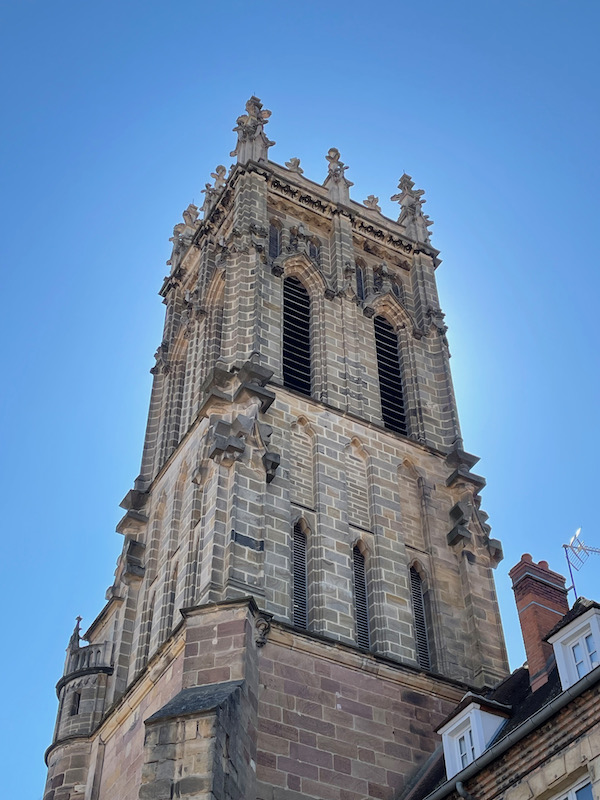
There are no side aisles along the nave, just small side chapels. As you can tell, the decoration within the church is relatively minimal, although there was one side chapel that still had the original wall painting. It does have nice stucco work and stained-glass windows around the choir.
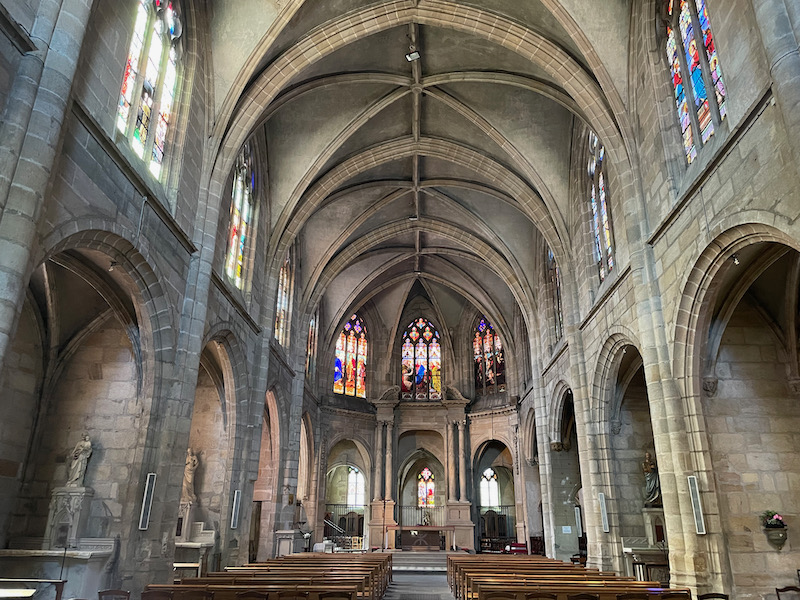
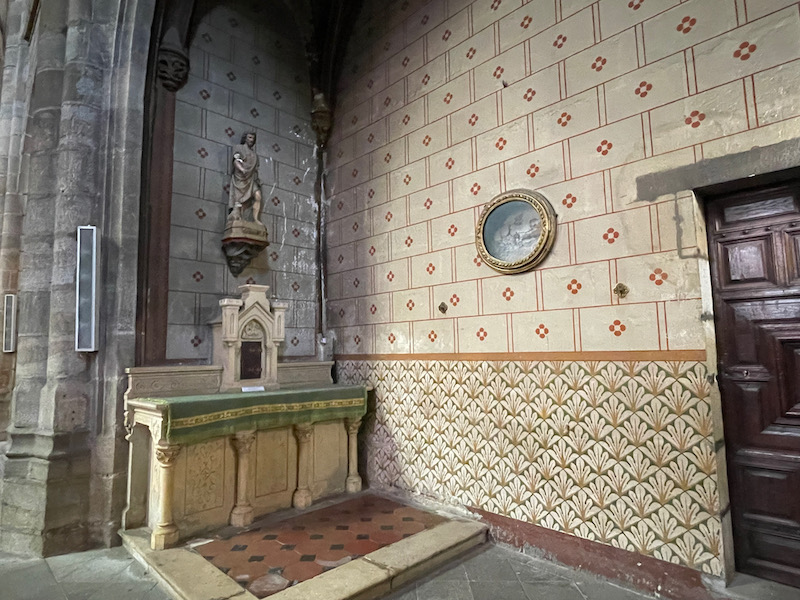
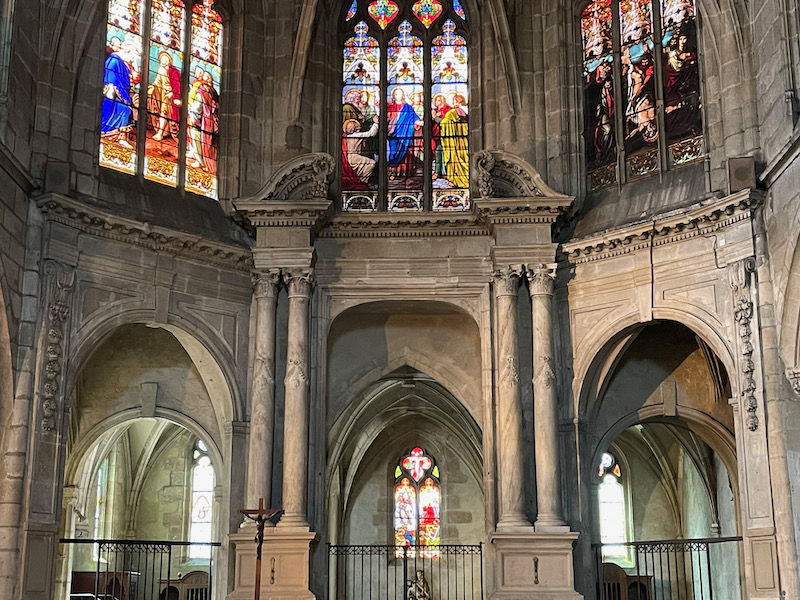
Only a couple windows, including one showing Saint Michael the archangel killing the dragon.
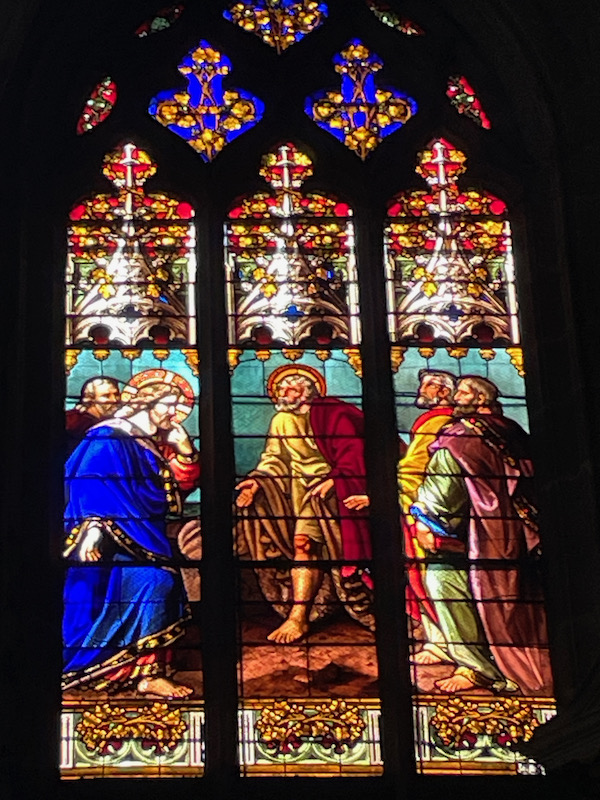
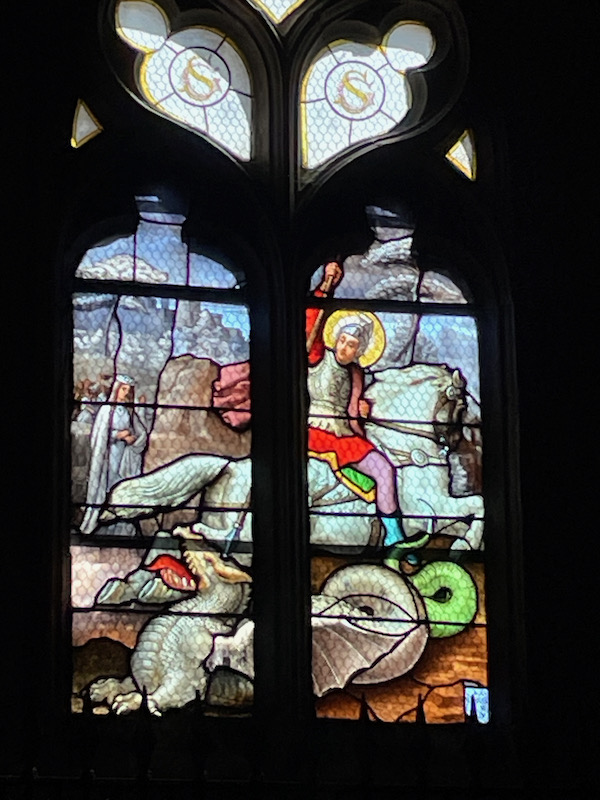
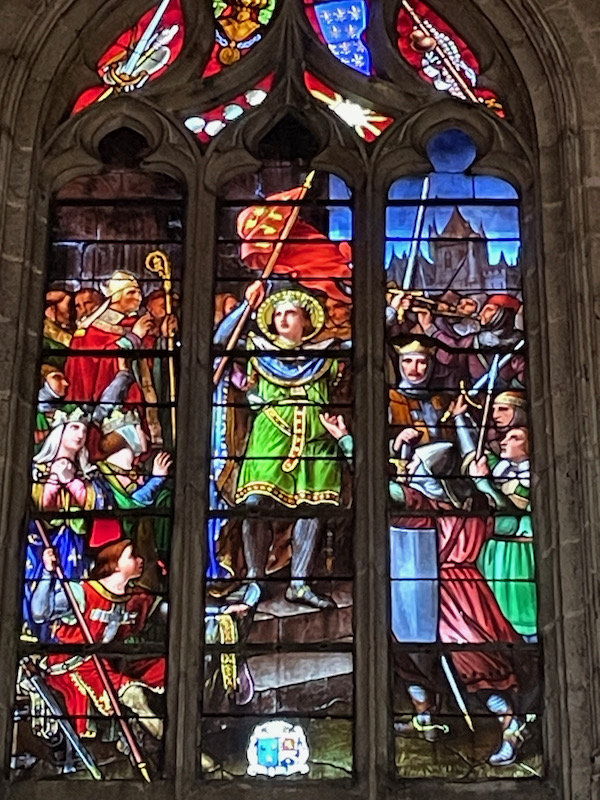
You can see the marble baptismal font, a Pietà in gilded wood from the 16th century, a stucco Entombment from the 19th century.
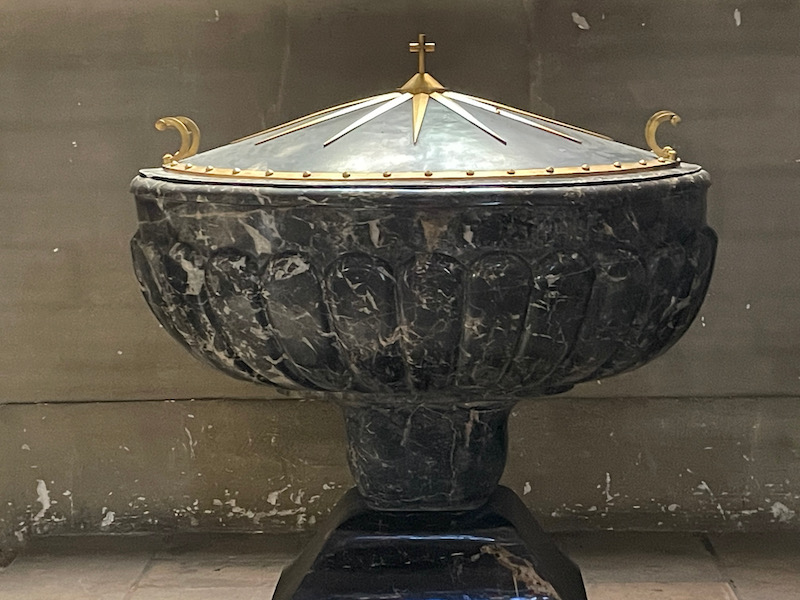
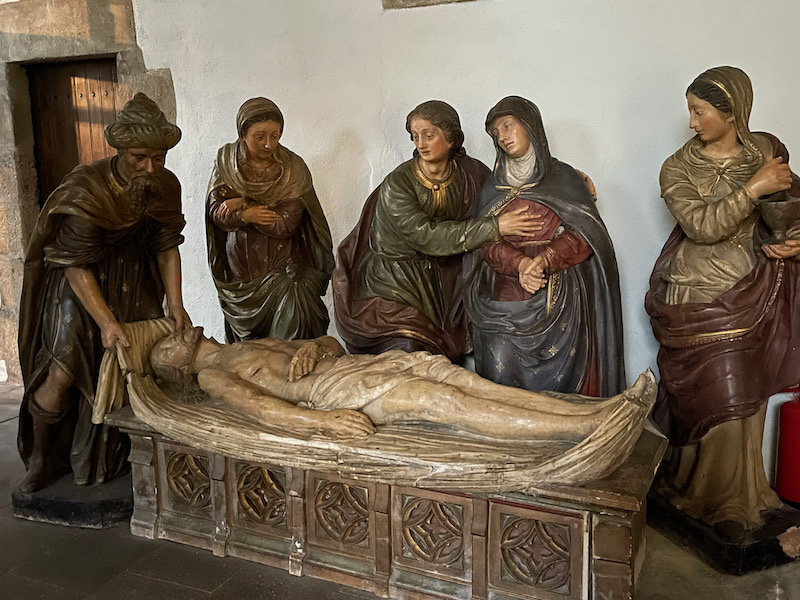
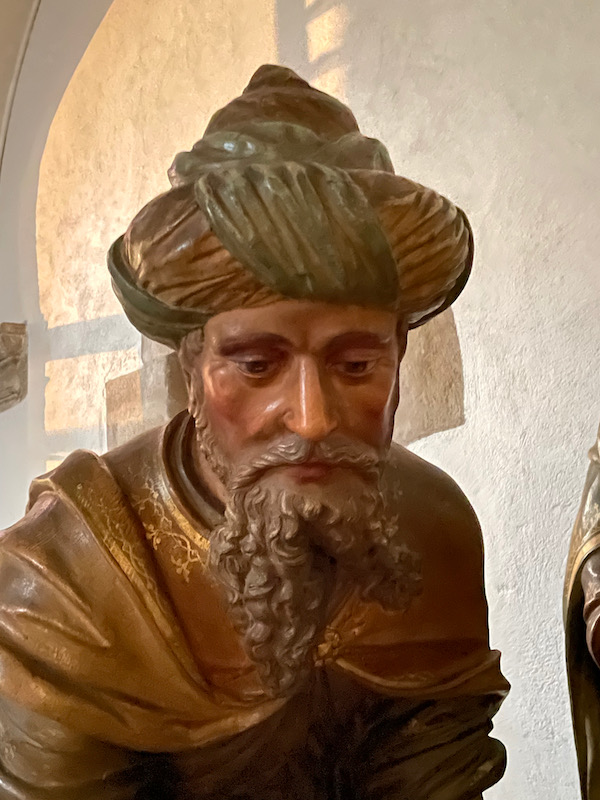
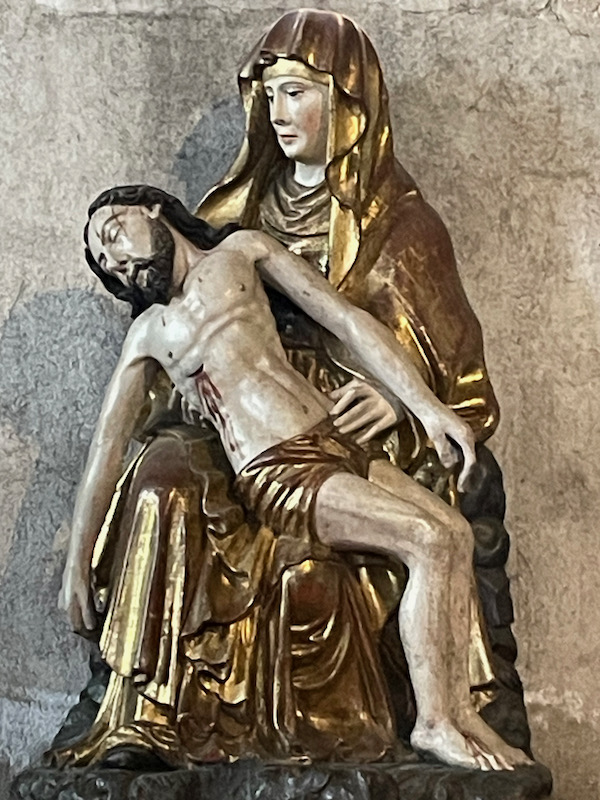
Eglise Sacre-Coeur was the 1st church in France dedicated to the Sacred Heart of Jesus. It was completed around 1870 after more than 20 years of construction work in a neo-Gothic style.
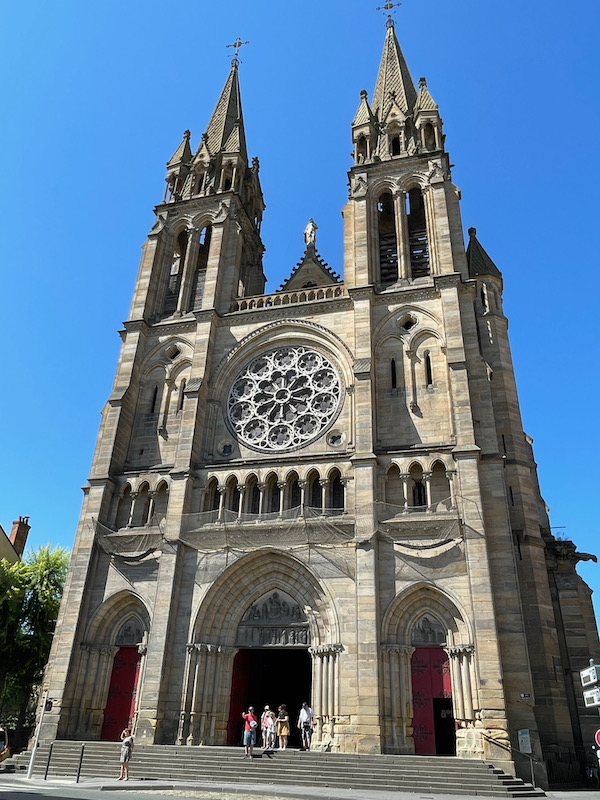
The western façade has 3 portals, each with a tympanum decorated with sculptures on the theme of the Sacred Heart.
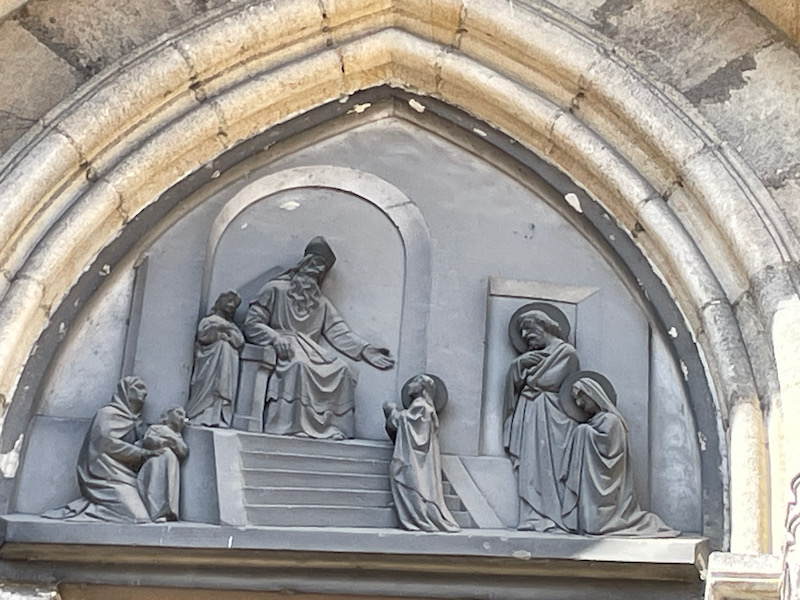
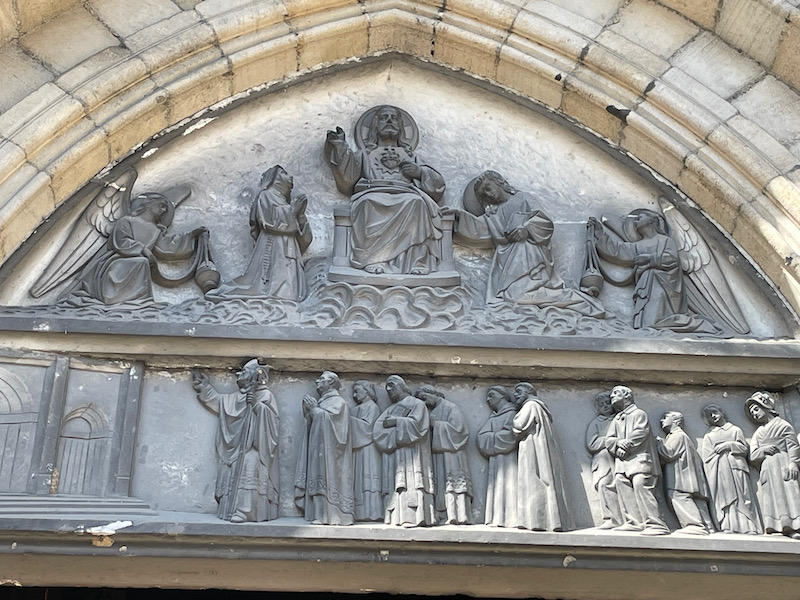
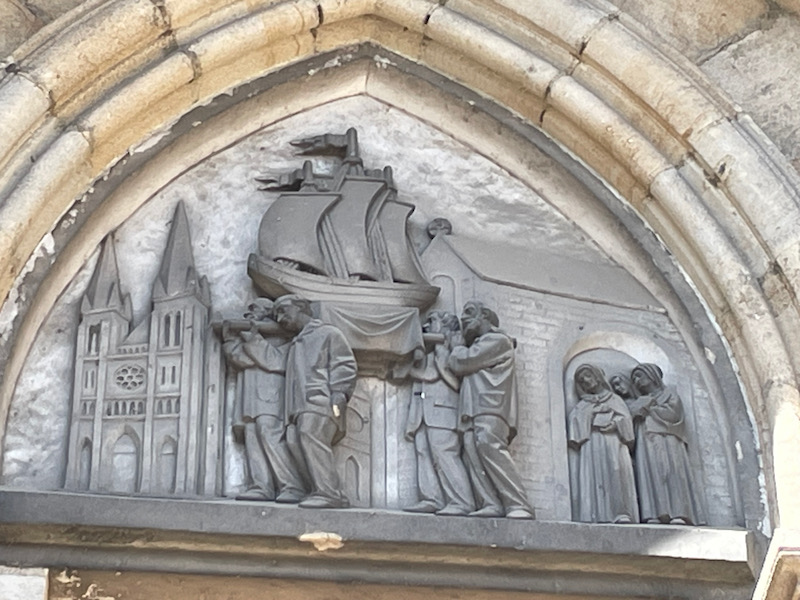
The nave has three bays and the choir has an ambulatory with radiating chapels such as are found in the great cathedrals of the 13th and 14th centuries. The chapels have some nice altars and statues including Saint Michael the archangel killing the dragon.
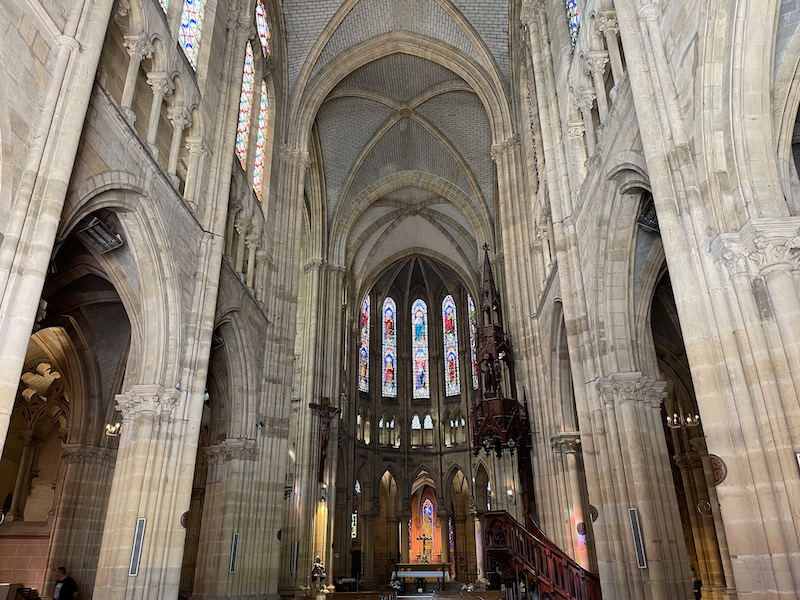
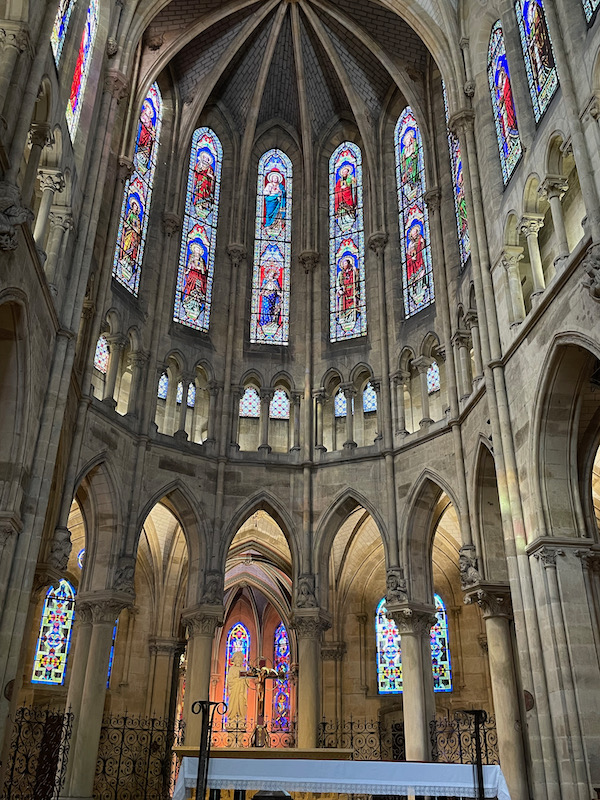
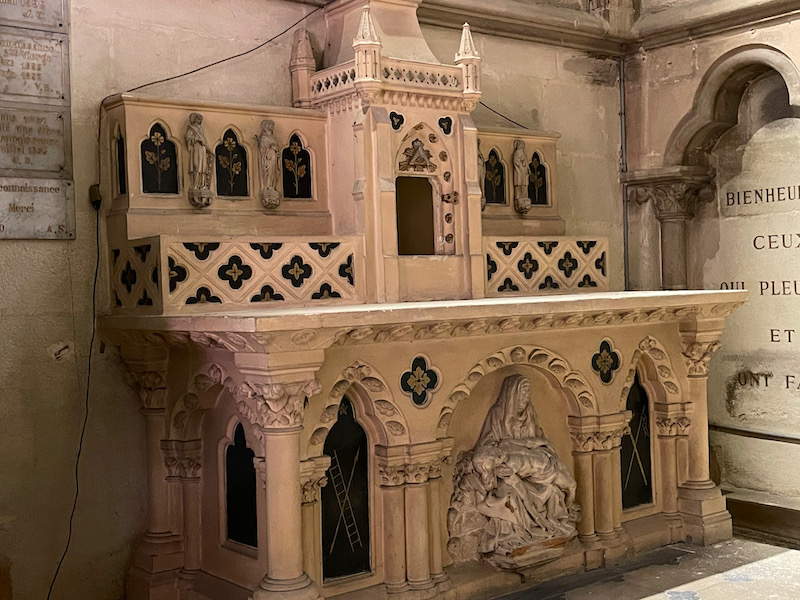
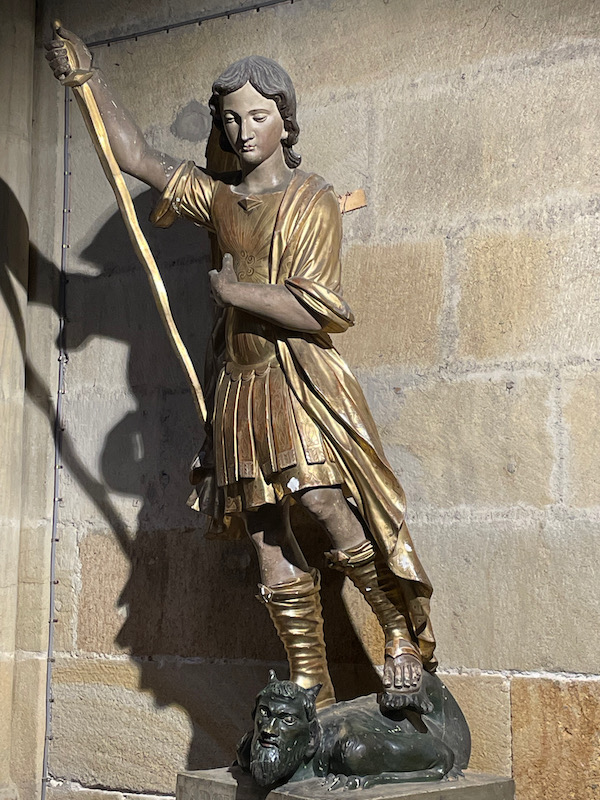
A couple Rose windows and stained-glass of the Profit Isaiah, dating from around 1863.
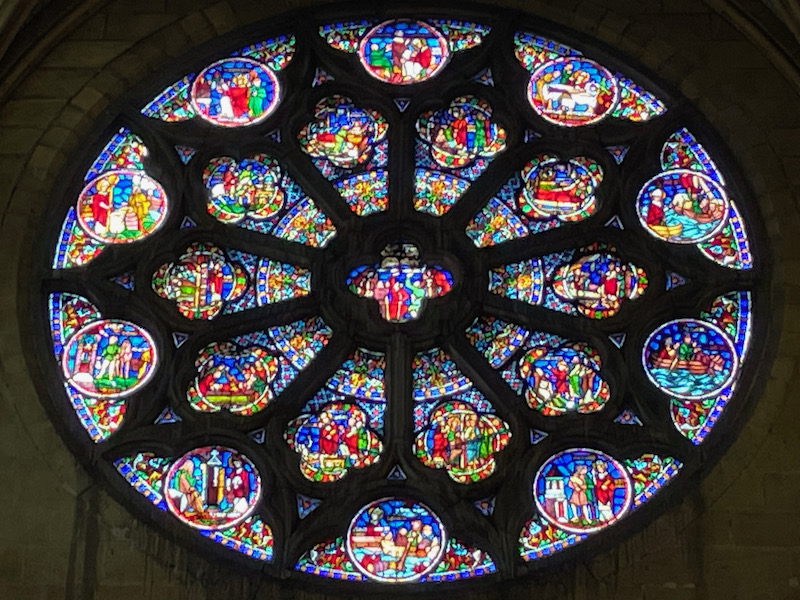
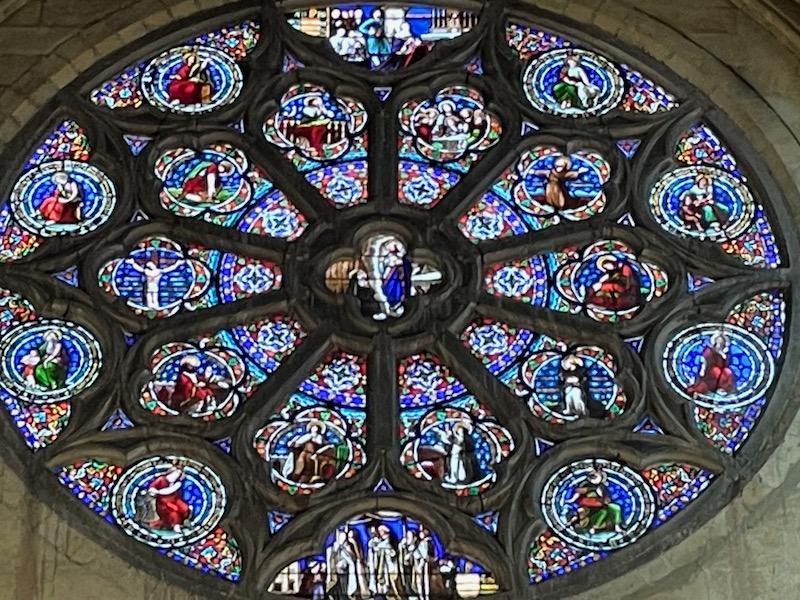
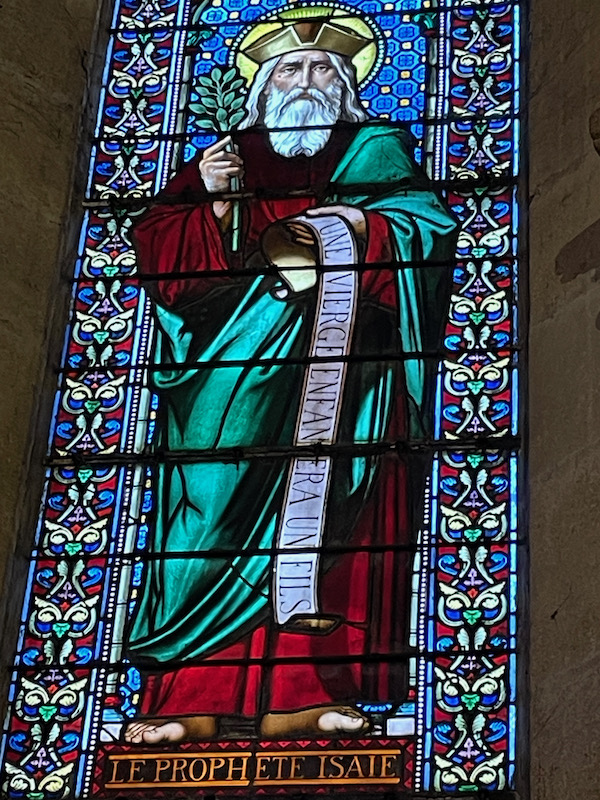
The only colorful chapel, this is the Chapel of the Sacred Heart.
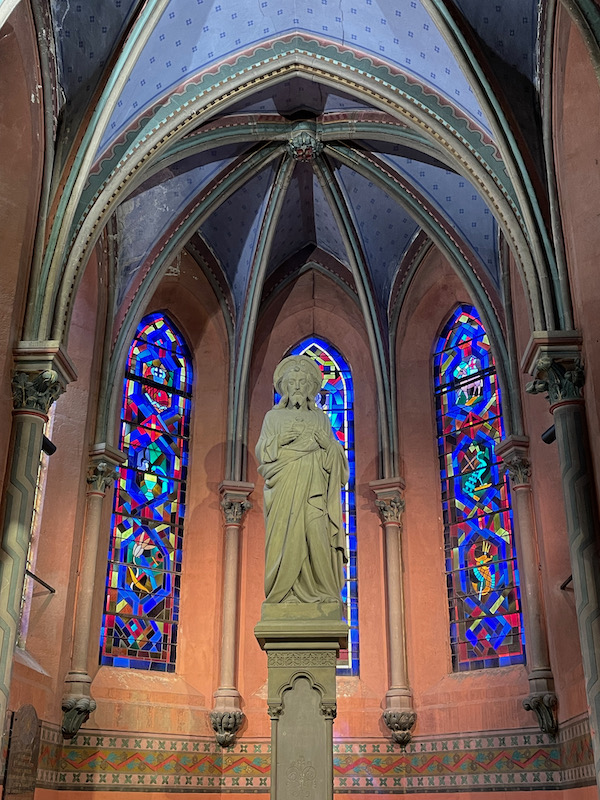
In the chapel of Saint Nicholas is a 17th century statue.
